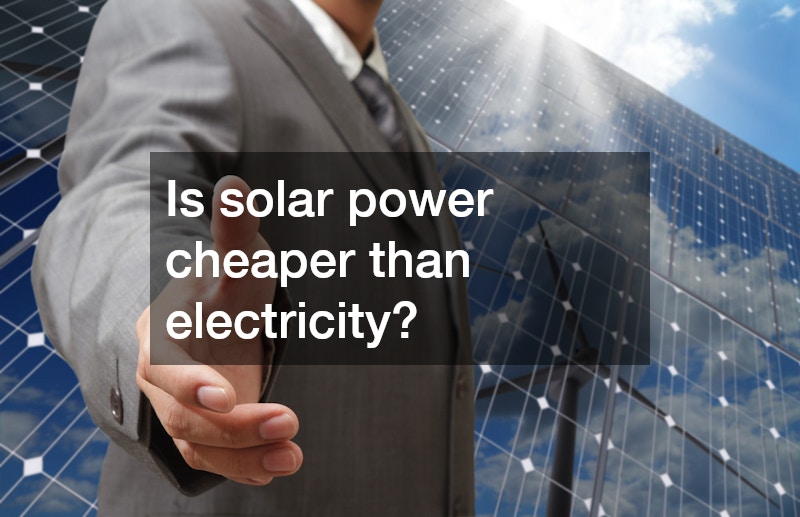
The debate on solar vs electric cost has glutted the Internet and print publications with articles and videos. You might ask, “Is solar power cheaper than electricity?” Yes, solar power costs nothing once you install the solar panel system, including an inverter and batteries.
Before you contact local solar electric companies to schedule a solar consultation, research the money-saving options in your state, such as rebates, tax incentives, and grants. Each state offers different options, making it much cheaper to install solar in some areas than in others. An average-sized home in the U.S. of about 2,000 square feet typically uses a 6 kW system, which costs an average of $19,000.

When building a new home, consider solar powered house plans that integrate a solar panel system or solar roof in the building design. Because an asphalt roof costs about $4 per square foot, installing a solar roof instead won’t add much to the building costs. Adding a solar panel system to the roof does include two costs. Your general contractor can provide more information on roofing choices and the least expensive way to install a solar energy system at your home.
 With rising concerns over climate change, more people are making their homes more environmentally friendly, and what better way to make a house more sustainable than by reducing its energy consumption?
With rising concerns over climate change, more people are making their homes more environmentally friendly, and what better way to make a house more sustainable than by reducing its energy consumption?
Residential solar solutions offer just such a solution. On average, it would take a single $52,000, 600-square-foot solar panel to provide an entire home with sufficient power. However, just plopping a solar panel anywhere won’t do much good.
Here are a few tips for getting the most out of your home solar power systems:
-
- Professional installation: Solar power technology has been around for a while, but that doesn’t make it any less complex. While homeowners may be able to save a couple bucks installing them on their own, the losses they entail could easily outweigh the savings. A lack in energy absorption due to poor installation or repairs for broken panels can rack up costs quickly.
-
- Placement: This may seem obvious, but make sure your solar panels are out of the shade at all times. This may require you to trim back trees or other plant life. Panels should also be angled towards the points that receive the most sunlight. Roofs are typically the ideal place for them to be installed.
-
- Keep them clean: Even if you have a great place to put your panels, you could still lose energy due to dirty panels. How frequently you should clean them varies depending on a number of factors, including the weather or location. Fortunately, unlike power generators, there are no moving parts you need to worry about breaking or wearing down, so maintenance may be limited to wiping your panels’ surface clear.
- Track consumption: In order to ensure that your residential solar solutions are working at optimum efficiency, it’s helpful to keep a record of your system’s day-to-day performance. It will also be beneficial to make a note of the days that were overcast, or if it was raining or snowing to get an idea of how much they affect energy production. You can then use this information to improve your system later.
With over 135,000 installations in just the first half of 2015, almost 784,000 homes and businesses in the U.S. have now turned over to solar power, with new solar projects being implemented every two minutes. It’s time to save money and the environment with residential solar solutions.